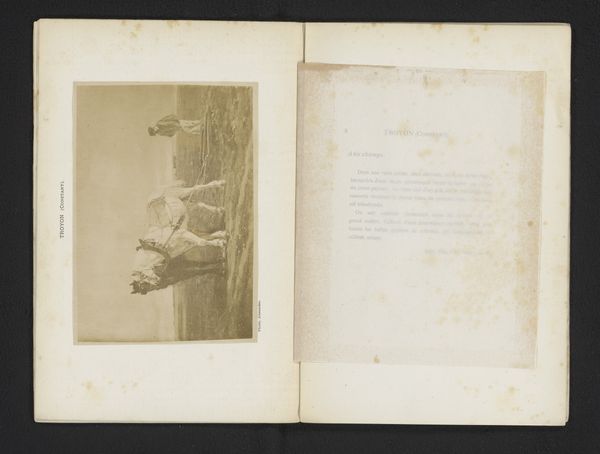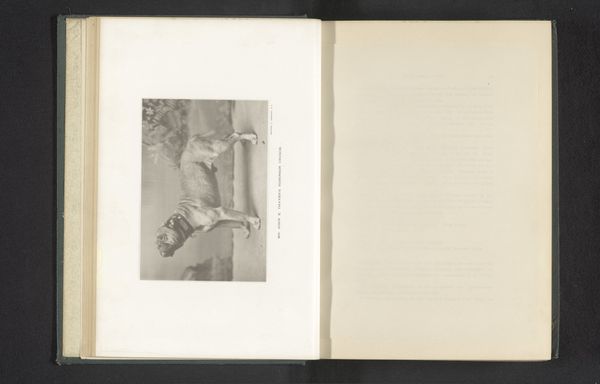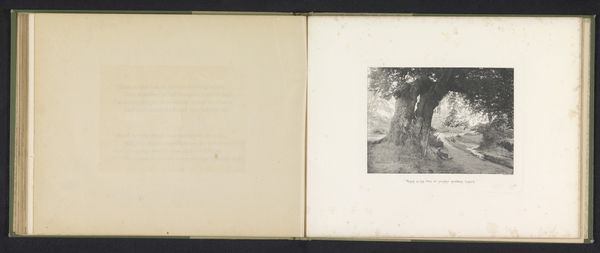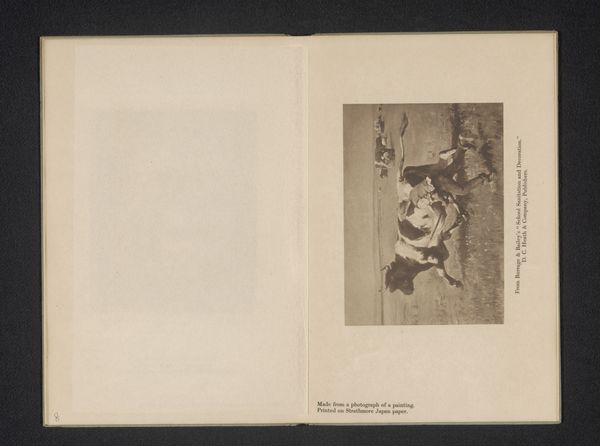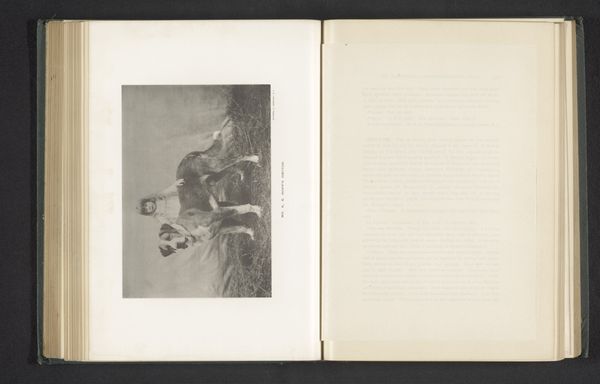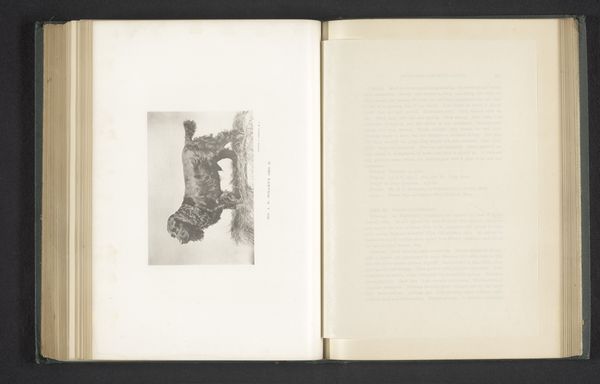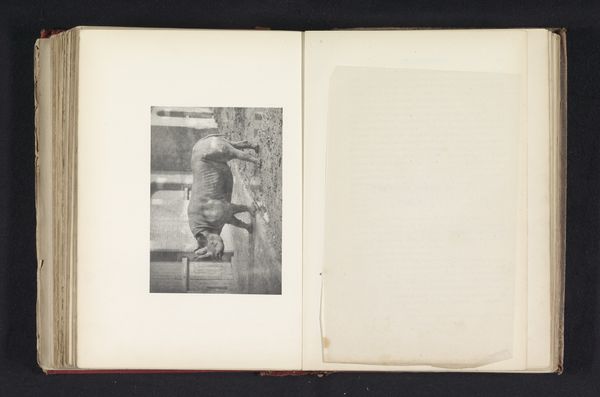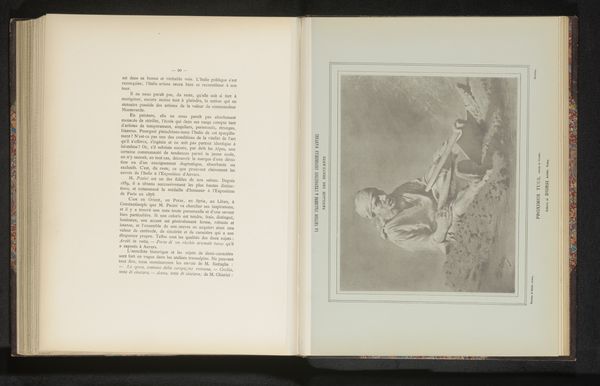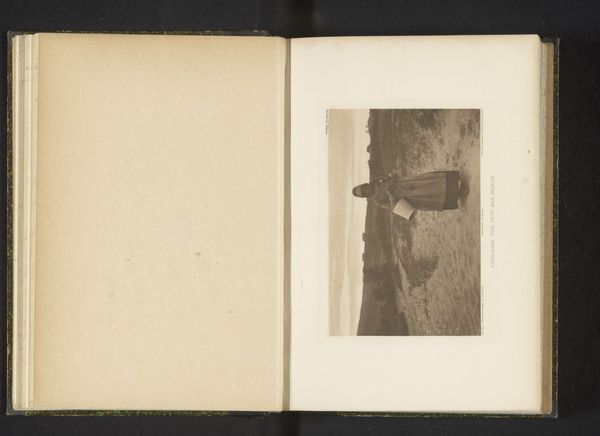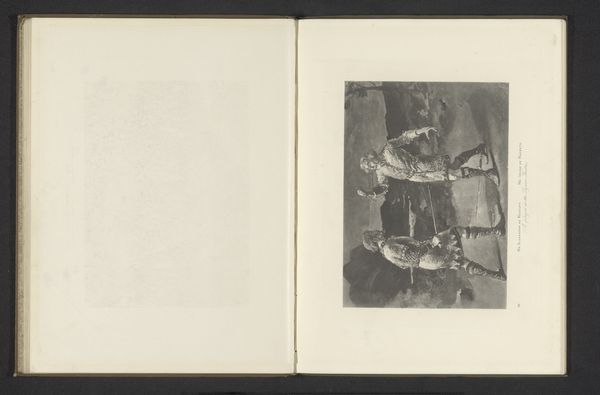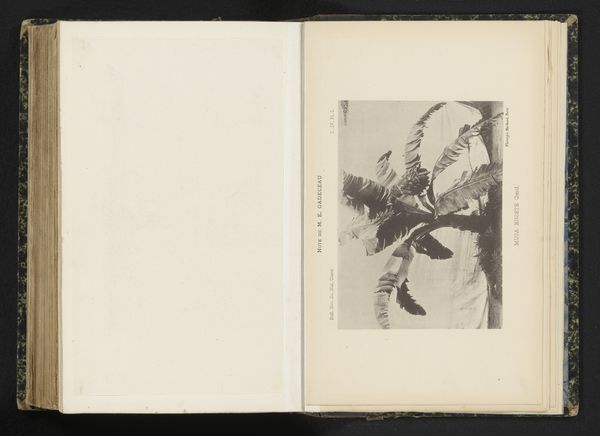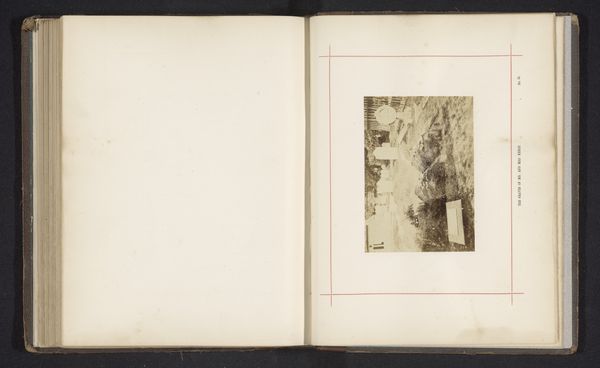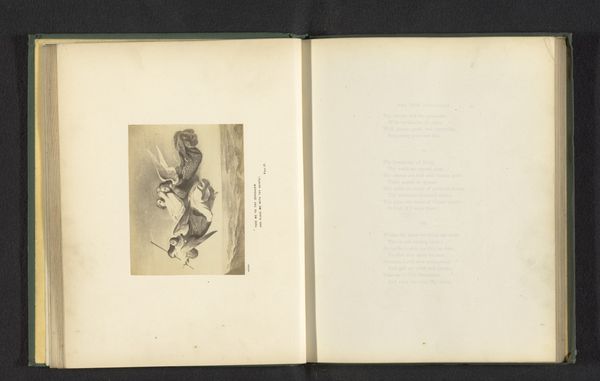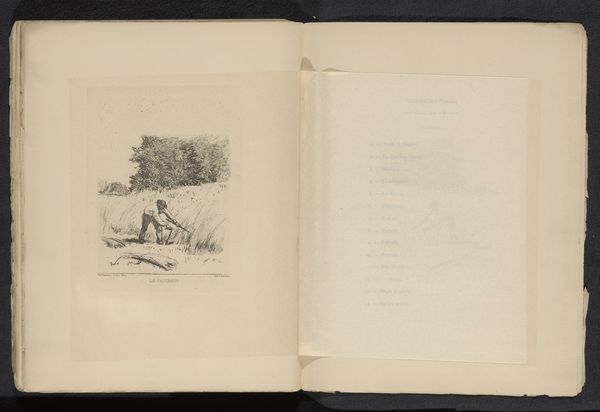
print, photography
#
portrait
#
aged paper
#
still-life-photography
#
homemade paper
# print
#
hand drawn type
#
paper texture
#
photography
#
personal sketchbook
#
hand-drawn typeface
#
folded paper
#
thick font
#
design on paper
#
historical font
Dimensions: height 108 mm, width 146 mm
Copyright: Rijks Museum: Open Domain
Editor: Here we have a photograph called "Setter," dating back to before 1888. It appears to be a print in a book, depicting a hunting dog. The print has a real antiquated quality, evoking this melancholic and old fashioned feel. What jumps out at you about this photograph? Curator: Thank you, that’s a great starting point. When I look at this image, I see more than just a simple photograph of a dog. Consider the social context of the late 19th century. Hunting was very fashionable for wealthy landowners, wasn’t it? And who gets represented and remembered often comes down to questions of power and privilege. What is being memorialized here? A beloved companion, or the symbols of elitism and colonial legacy? Editor: So, you're saying this photo captures a specific class and power dynamic of the time? It’s interesting how the very act of documenting this animal ties into broader social issues. Curator: Exactly. Also think about whose stories often go untold. For every lavishly kept hunting dog immortalized in photography, how many working-class animals – or, for that matter, working-class people – are overlooked by history? Can we see, perhaps, an analogy to the construction of idealized versions of rural life while ignoring rural poverty? Editor: That's a fascinating way to look at it! It makes me rethink how photography, even something that seems simple, can perpetuate particular narratives. I learned something new about viewing the past today. Curator: It goes to show the profound effect visual language can have on historical narratives. Considering images like these, alongside more diverse visual representation, we gain a far more textured and inclusive understanding of the 19th century.
Comments
No comments
Be the first to comment and join the conversation on the ultimate creative platform.
